We decided to escape the Minnesota cold this winter by heading to the Yucatan peninsula of Mexico. The visit was mainly spent hanging out in fun cities and exploring Maya ruins. We went to the cities of Valladolid, Merida and Campeche. Each is an old colonial city with their own personality.
Valladolid is the smallest of the three cities, and it is only an hour or two west of Cancun. The hostel we stayed at had a beautiful courtyard complete with lounging hammocks. This area of the peninsula has thousands of cenotes, which are freshwater sinkholes carved into the limestone. We biked to a cenote about five miles from town, which was very fun until David's bike got a flat tire about a mile away. We decided to carry on and had a lovely dip and shoved our bikes in the back of a taxi to get back to town. We also visited a calm and beautiful cenote right in the center of town.
 |
| Emily swimming in a cenote in the center of Valladolid. This one is over 100 meters deep! |
The seaside city of Campeche has a 400-year old walled center with stone
forts to protect it from pirates. The walls and forts are a UNESCO world heritage site, which is pretty special. There are a bunch of parks and lots
of of colorful colonial homes with huge rooms and high ceilings.
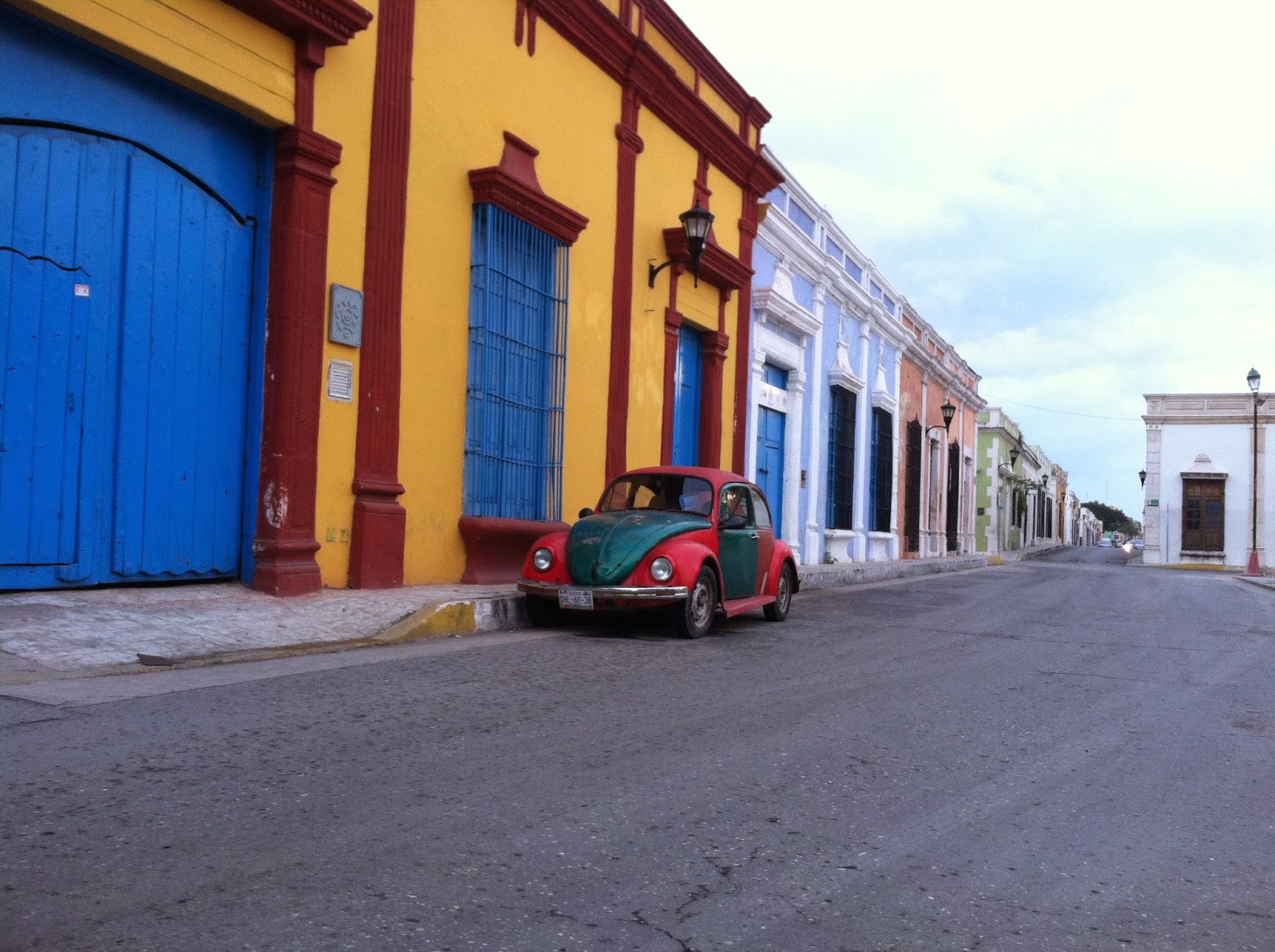 |
| There were lots of awesome original VW Beetles still on the streets. |
 |
| One thing that struck us about both Campeche and Merida was the plethora of awesome murals and street art. |
 |
Typical street in the walled area of Campeche. The large white building in the back is one of the cities oldest churches, which borders the zocalo (main park).
|
Merida is the largest city in the area, with over a million residents. It has tons of delicious restaurants and lots of interesting museums. One of our favorites was the folk art museum. Although we showed up only 30 minutes before it closed, we had enough time to check out a room packed full of nativity scenes made of every imaginable material and theme. On Sundays, downtown Merida's streets are shut off to cars. There is bike route for about five miles stretching through brick streets to the wide boulevards north of downtown. Thousands of people come out to ride, mostly families, but also tourists and, as we observed, a group of young men lowrider aficionados blaring 'The Lion Sleeps Tonight'. After we rode bikes around for a couple hours, we people-watched in the many parks, which are lined with cafes. A few of the parks had stages set up for bands, and couples danced in the front as kids bugged their parents to buy them ballons and churros from street vendors. As the evening approached, the zocalo was transformed into a major venue with several stages. When we returned that evening, the square was packed with about 10,000 people who came to see the free concert. Not a bad place to enjoy a strawberry paleta - a dessert kinda like a popsicle, but much, MUCH, more delicious.
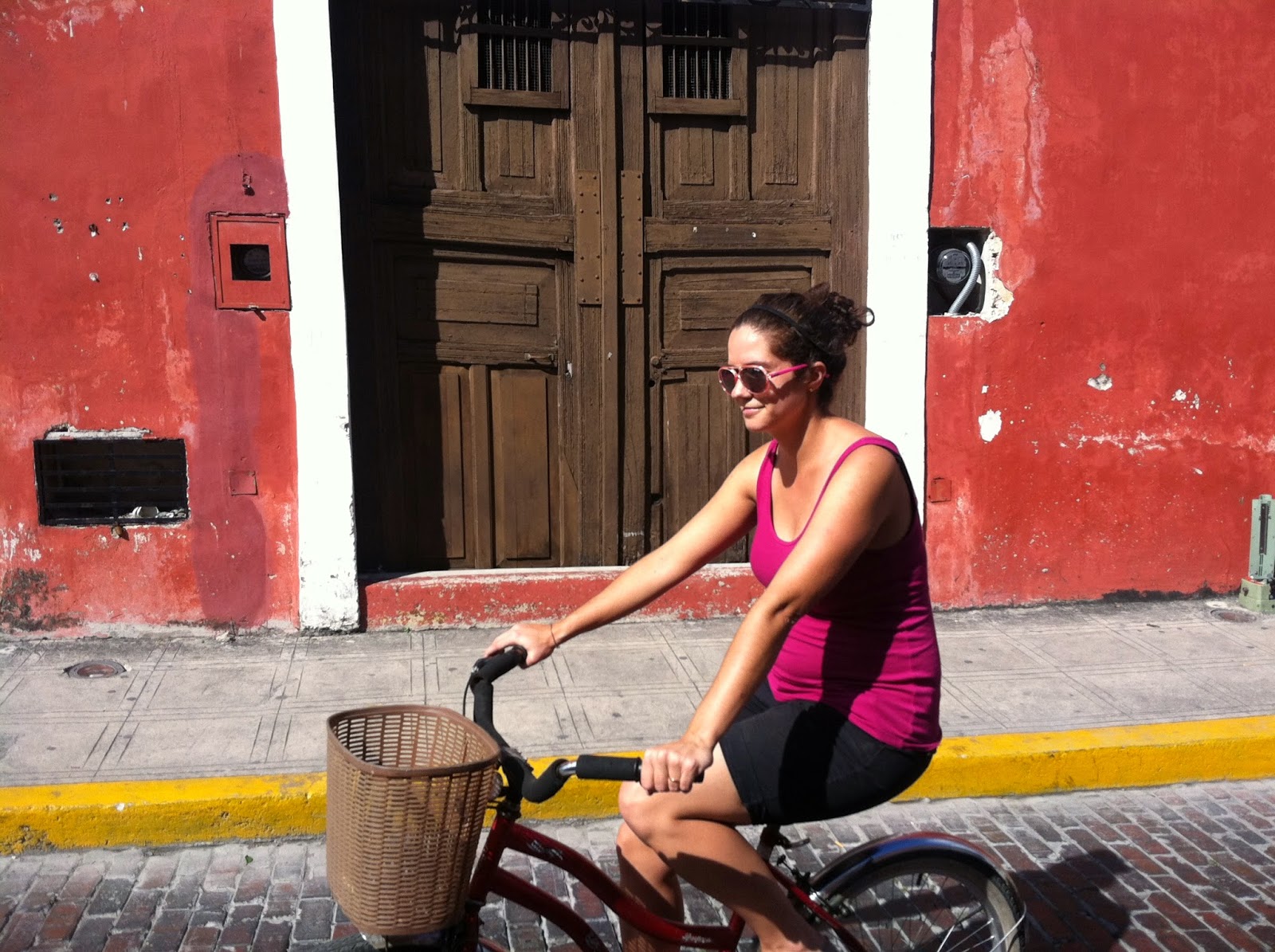 |
| On a bike ride on Sunday in Merida. |
We also spent three days in a small town of a couple thousand people a few hours south of Merida called Santa Elena, which we mostly used as a base for exploring nearby caves and ruins. There, we also saw one of the craziest things I have ever witnessed
in my life. It happened to be the week of Santa Elena's patron saint (San Mateo) festival, and there was a big celebration with
rides, tons of foosball tables, and food in the town square. The town church, which is this huge,
hundreds of year old building, is on a hill above the square that is accessible
by steep stone steps. During the evening, the banners and other things associated
with San Mateo are removed from the church (accompanied by a band) and paraded
around town. As this was happening, we noticed that the band and everyone else
in the square (excepting the town’s entire population of adolescent boys) had
moved up to the second half of the staircase. I don’t know much about
traveling, but my one general rule is to never be the only one doing
something. So we followed the crowd up, which proved to be a great decision, because
a kid wearing a huge paper mache bull on his head packed with fireworks started
running around the square. He chased the rest of the boys, and the fireworks
were going everywhere – into power lines, into the crowd, etc. It was the
closest to being in a war zone I ever hope to be. But it was awesome. We asked
at our B and B, and it is called the Torito (little bull) and happens every
year. I found a video of it online from a couple years :
https://www.youtube.com/watch?v=k57_I5MIstk
 |
| There were about twenty foosball tables set up in the town square. I teamed up with a local kid versus David and another kid and we creamed them*. *Disclaimer: result may have varied from stated outcome. | |
|
|
We went to six Maya ruins total on the trip. Most were at their peak populations from around AD 600-1000, during the Classic and early Post-Classic periods. Some of the cities were very large, with populations of about 50,000 people. It was amazing to see huge cities with only a fraction of their buildings exposed and the rest covered in jungle. The most impressive site we went to was Uxmal, which is a UNESCO world heritage site and has massive buildings with beautiful carvings. Other ruins were also fun, as we were typically the only ones at the sites walking though the jungle from building to building.
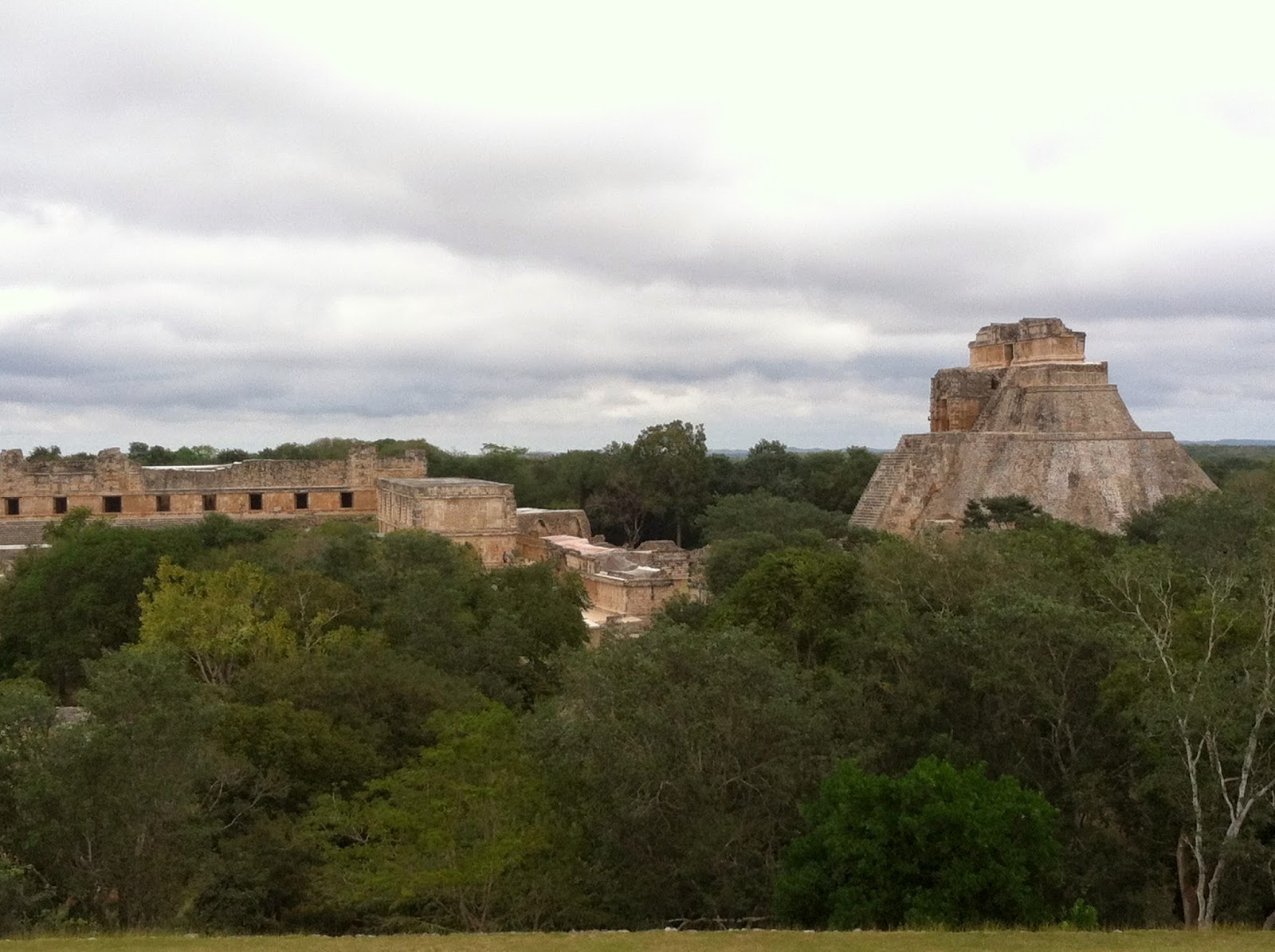 |
| View north from the Governor's Place at Uxmal. |
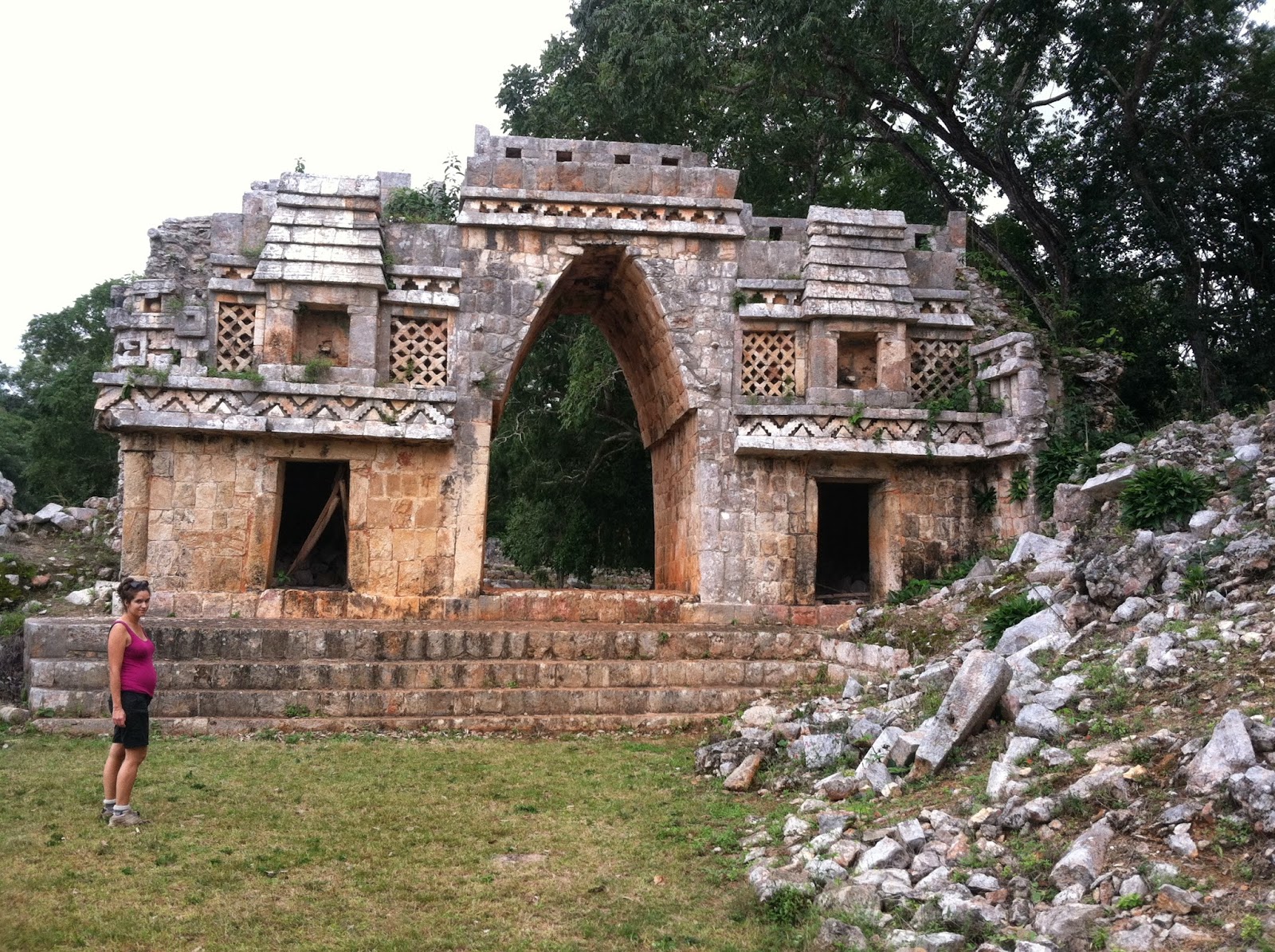 |
| The arch at Labna. Just beyond this arch was a sacbe, or raised road made of stone that the Maya built connecting cities. |
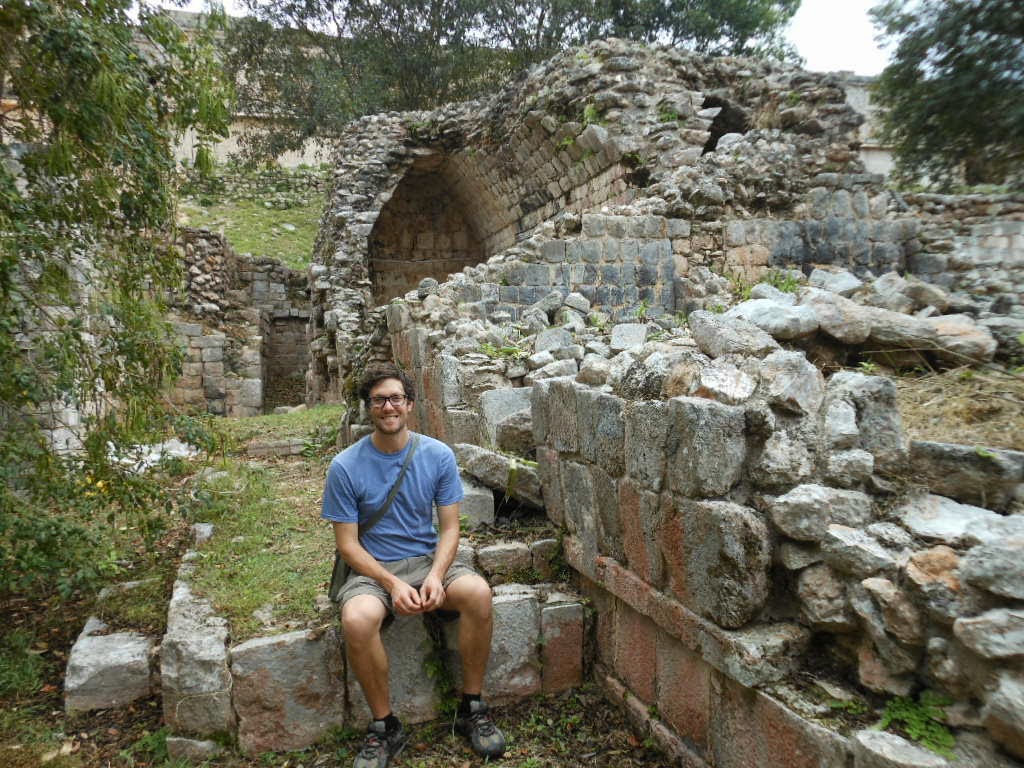 |
| David takes a break at Uxmal. Some buildings at the sites were restored, some were cleared off but still ruble, and others remained covered in thick jungle. |
 |
| Many of the site we went to had buildings constructed in the Puuc style. One of the most common decorating motifs of this style is the Chac (Rain God) mask, this building was covered in hundreds of the masks. |